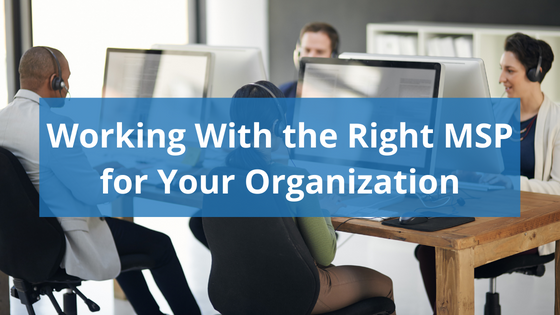When we think about cybersecurity, we often consider the tools we can use to help protect our digital environments. We have previously mentioned how your staff is often the weakest link when it comes to keeping data secure and recommended frequent testing and training to help them better understand risk and security. In addition to these measures, you may benefit from assessing your file access policies and implementing the principle of least privilege.
What is the principle of least privilege?
Least privilege is a cybersecurity concept involving restricting access to files, accounts, and tools so users can only see or interact with things that are necessary for their job function. This principle can also restrict access for devices and software applications so they cannot perform unauthorized activities. Essentially, least privilege starts everyone with the lowest level of access possible to prevent malicious or accidental security breaches.
How would least privilege protect an organization?
There are a few key ways implementing least privilege can help protect your organization. Firstly, it reduces the chances of user error. When users have unrestricted access to files or tools that are essential to business functions, you run the risk that information can be accidentally moved, deleted, or altered. Regardless of this behavior being accidental or malicious, it could seriously impair your ability to continue operations. Restricting privileges limits this possibility.
Secondly, least privilege can prevent malware from impacting your environment. There are many ways malware can exploit security vulnerabilities. Users may accidentally install it, software vulnerabilities may be exploited, or impacted devices may use connections to launch malware across your organization's devices. Least privilege can prevent these actions by stopping users from downloading unauthorized software and preventing existing tools from running potentially dangerous actions.
Finally, implementing least privilege minimizes the attack surface malicious actors could use to access information or carry out an attack. When administrator privileges are limited, it becomes easier to detect, prevent, and stop malicious attacks.
How is least privilege implemented?
If you are considering implementing the principle of least privilege you should start with an assessment of your current rights permissions and policies. By auditing your entire environment, you can review the access and credentials of your staff, contractors, and machines to determine the correct policies for each job function.
Once this work has been done and you begin onboarding new staff members, you can ensure you are granting the minimum privileges necessary for each new hire. You can work with your IT department to create role-based access policies and set guidelines around how new user accounts should be configured.
Sometimes you will encounter a project or other reason why a user will need increased permissions to complete their work. You can resolve this by providing granular access to an individual, giving them just the right amount of access for the right amount of time. Be sure to monitor and restrict access again once those privileges are no longer needed.
Least privilege could be an easy way for your organization to ramp up cybersecurity efforts while maintaining productivity. Your IT team can help you understand what tools you might need to use to manage user permissions and can help you create and implement appropriate policies for your organization. If you are interested in improving your cybersecurity efforts or need help with other technology projects, contact us.









Leave a Reply